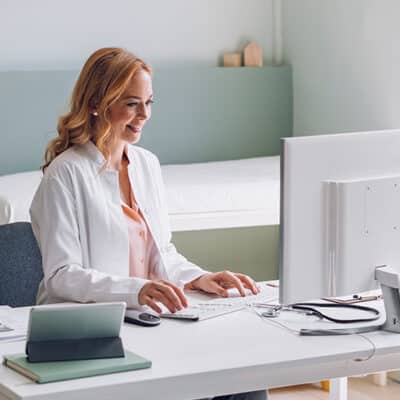For medical practices and healthcare organizations looking to enhance patient care, improve clinical outcomes, and optimize resource utilization, remote patient monitoring (RPM) has emerged as an invaluable tool.
However, one significant challenge that providers often face is the reimbursement process. To shed some light on this crucial topic, we are sharing some of the most frequently asked questions and answers around RPM reimbursement.
Who pays for remote patient monitoring services?
RPM services can be reimbursed by various payers, including Medicare, Medicaid, private insurance companies, and accountable care organizations (ACOs). The reimbursement policies and rates vary and depend largely on the payer, the region and the specific services provided.
For Medicare patients, a practitioner can bill Medicare by submitting CPT codes for RPM services. Most Medicare patients do not have to pay for the services. However, Medicare B patients are responsible for a 20% co-payment.
Medicaid patients may also be eligible for RPM reimbursement. As of 2023, the Center for Connected Health Policy (CCHP) reports that 37 states have some form of reimbursement for remote patient monitoring in their Medicaid programs.
What CPT codes cover RPM, and how much are they reimbursed by Medicare*?
As of 2024, the RPM CPT codes are as follows:
Remote Patient Monitoring CPT Codes |
||
CPT 99453 |
Initial set-up & patient education on equipment.
(one-time fee) |
$19.00 |
CPT 99454 |
Supply of devices, collection, transmission, and report/summary of services to the clinician. | $46.00 |
CPT 99457 |
Remote physiologic monitoring services by clinical staff/MD/QHCP first 20 cumulative minutes of RPM services over a 30-day period. | $48.00 |
CPT 99458 |
Remote physiologic monitoring services by clinical staff/MD/QHCP for an additional cumulative 20 minutes of RPM services over a 30-day period. | $38.00 |
Please note: Reimbursement amounts represent Medicare’s national non-facility averages for 2024. Actual reimbursement amounts may vary by geography and payer.
What devices are approved for RPM services?
The device must meet the FDA’s definition of a medical device. This means the device must digitally (i.e., automatically) upload patient physiologic data. This data cannot be self-recorded or self-reported by the patient. Examples include:
Are there patient copays for the RPM?
Yes, for Medicare beneficiaries: Like most Medicare services, patients are responsible for applicable coinsurance depending on the service provided. This copay is generally not waivable, but it may be covered if a patient has supplemental coverage or Medicaid.
Can RPM be used with new and established patients?
CMS confirmed in the 2024 Final Rule, RPM, not RTM, services require an established patient relationship after the end of PHE.
Can RPM be billed in conjunction with Chronic Care Management (CCM) services?
Yes, a provider can bill for both RPM and CCM services. CMS recognizes that RPM services are complimentary to CCM and other care management services. However, time spent by providers in furnishing these services must be counted separately. Billing RPM CPT code 99457 and CCM CPT code 99490 together requires a provider to deliver at least 40 minutes of services: 20 minutes of RPM and 20 minutes of CCM.
What is the definition of “clinical staff” for RPM reimbursement?
Per the American Academy of Family Physicians (AAFP), a clinical staff member is defined as “a person who works under the supervision of a physician or other qualified healthcare professional and who is allowed by law, regulation, and facility policy to perform or assist in the performance of a specified professional service but does not individually report that professional service.”
What is the 16-day rule for RPM?
Per CMS, when billing for CPT code 99453 and CPT code 99454, practitioners must collect at least 16 days of data per 30-day period. The 16-day data collection rule does not apply to time spent codes 99457 or 99458.
Can more than one practitioner deliver RPM services to the patient at the same time?
No. Regardless of how many RPM devices a patient is provided with, the services associated with them can only be billed by one practitioner, per patient, per 30-day period.
Are patients permitted to report their own measurements?
No, not for RPM. RPM device measurements must automatically sync with a provider’s remote patient monitoring platform without any patient transcription.
Can FQHCs and RHCs bill for RPM services?
Yes. CMS confirmed starting January 1, 2024, Federally Qualified Health Centers (FQHCs) and Rural Health Centers (RHCs) will be able to receive payment for remote patient monitoring (RPM) and remote therapeutic monitoring (RTM).
Start The Path Toward Better Patient Care
Have questions about how remote patient monitoring for healthcare will work for you and your patients? Let’s have a conversation.



